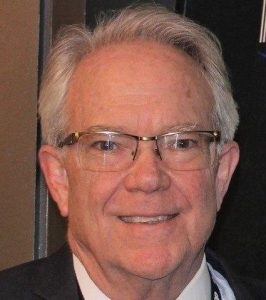From public safety, to sanitation, to libraries, and more, the city of Dallas is aiming to deliver those services – and improvements to them – with a foundational commitment to improving the availability of broadband services to all, city CIO Bill Zielinski says.
During a Feb. 28 webinar organized by GovExec entitled “Government CX Redefined: Optimizing People, Process, and Technology,” Zielinski waxed eloquently about the city’s all-in approached to the citizen service mantra, especially as it applies to broadband accessibility.
“One of the CX principles that we’re really super focused on right now are the issues in and around the digital divide,” Zielinski said. “Not every portion of the city, not every resident in the city has the same kind of access to digital services that other residents of the city do.”
The CIO feels that Dallas is now well positioned – as a result of new Federal funding centered around issues of equity – to help tackle those digital divide issues.
Zielinski came to Dallas almost two years ago following an impressive career with the Federal government including stints with Office of Management Budget, the Office of Personnel Management, Social Security Administration, and the General Services Administration.
In Dallas, first and foremost, he has worked to ensure that its network infrastructure was robust and strong enough throughout the entirety of the city. “We can, number one, ensure that all of our residents have access to high-speed, low-cost broadband,” Zielinski said.
Once that effort was in place, Zielinski got to the fun stuff.
“From there, we started talking about the types of services that we can be delivering digitally, things like gunshot detection or traffic flow patterns, things that really put technology out into the communities, out on the edge and allow for us to really improve the service delivery,” he said. “We were able to use that network infrastructure to then deliver those types of digital services to our residents.”
Now Dallas is looking at that network infrastructure and determining how it can leverage Federal funding from the Infrastructure Investment and Jobs Act to help ensure that it can provide those services in an equitable manner across the city. The bipartisan infrastructure law will deliver $65 billion nationwide to help ensure that every American has access to reliable high-speed internet through a historic investment in broadband, and Dallas is primed to get its share.
Existing Challenges
Zielinski’s efforts, however, have not come without their challenges, beginning with the obvious.
“We face on a daily basis the fact that Dallas is a geographically large city that is also very diverse in terms of its population,” he said. “In many ways, when you look at the city of Dallas, it consists of many communities that have been joined together over time into this very large metropolitan area.”
As a result of that, over decades and decades of growth, Dallas has very different levels of infrastructure in different portions of the city. “The north is much more modern, and there, this network infrastructure and all these other city services have been built in from the very beginning.”
However the southern portion of the city has lacked that same kind of robust infrastructure.
“So for us to really be able to roll out some of these digital services, we first had to simultaneously take a look at how do we ensure that we are building up that infrastructure itself so that those opportunities are there for everyone,” Zielinski said.
Big Payoffs
He emphasized that as the city addresses these infrastructure issues and puts digital services into place, the effort isn’t a one-and-done thing.
“It really opens the door for a lot of other opportunities,” he pointed out. “I think [it’s important] helping people understand from an investment perspective that these are vital steps that will then produce an ongoing series of opportunities and the ongoing possibilities for economic growth. It’s important for us to make those investments,” he said.
Another challenge facing Dallas involves its school districts, Zielinski said. While the city oversees most community jurisdictions, the school districts are independent. In addition, the city is contiguous with parts of five different counties, and each of these counties has their own administrative governments. And there are transportation jurisdictions as well.
“So as all of us are trying to solve these common problems, that level of coordination on everybody’s part is a coalition of the willing. But it does take a coordinated effort to make sure that, as each of us are attacking these individual problems, we’re not all attacking the same problem with the same kinds of dollars and leaving other areas out of it.”
The big question is how Dallas and its surrounding communities, as well as other large metropolitan areas across the country, will coordinate to make the best use of these new Federal funds.
As Zielinski so aptly pointed out, “How do we ensure that we’re really doing the most that we can for all of the residents of this area? That level of coordination, as well as resolving some of the long-standing deficits in certain parts of the city, [allows us to] raise all boats and we can bring us all to a common point of opportunity.”

